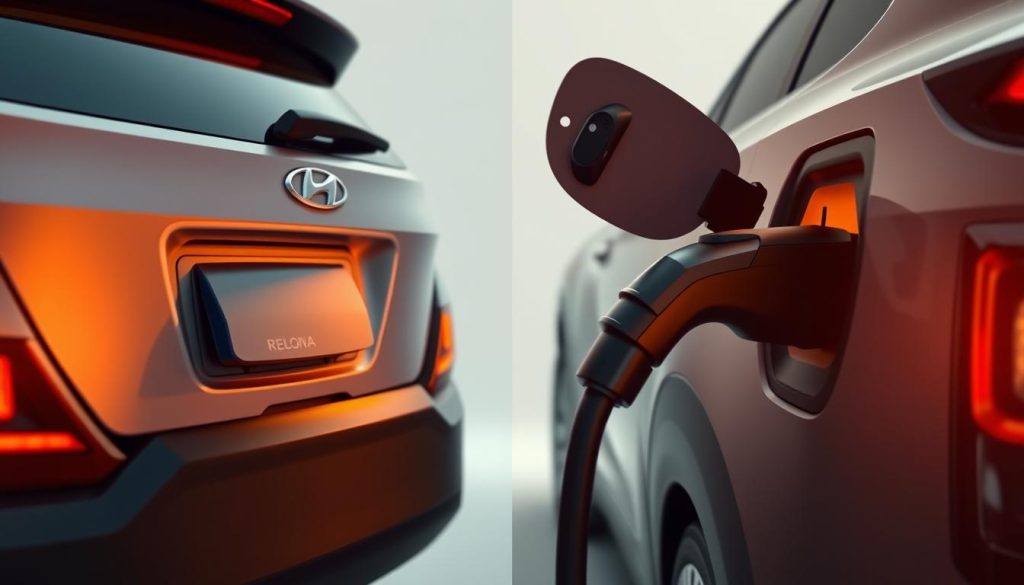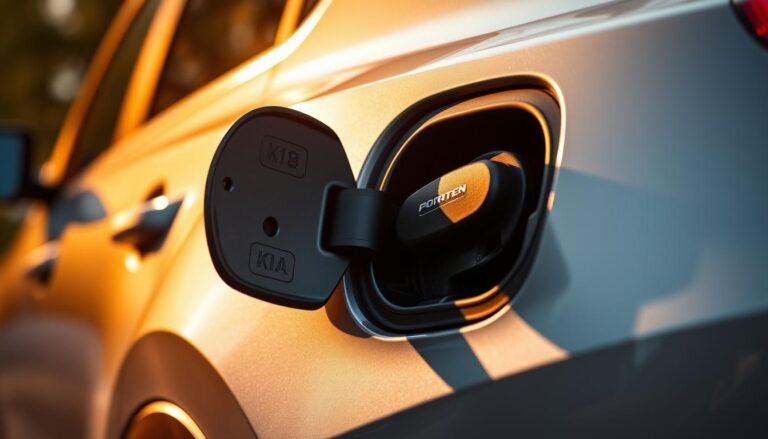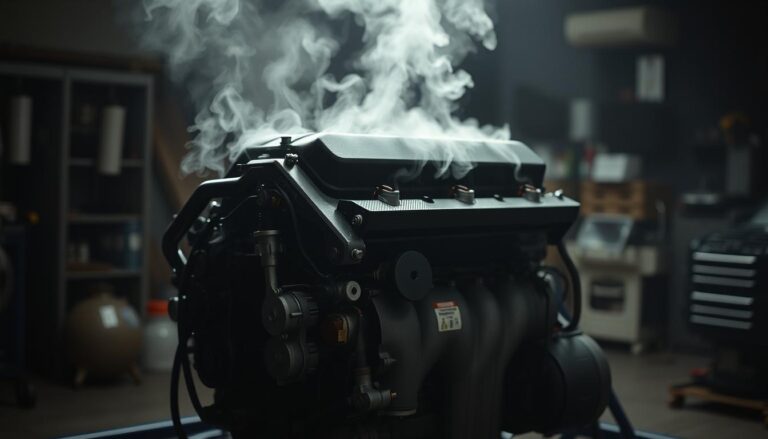Understanding the Hyundai Kona fuel door release mechanism is crucial for a hassle-free refueling experience. The Hyundai Kona, a popular compact SUV, is designed with user convenience in mind, including its fueling system.
Knowing how to access the gas tank on your Hyundai Kona is essential for maintaining your vehicle’s health and ensuring you’re always ready to hit the road. This guide will walk you through the simple process of opening the gas tank on your Hyundai Kona.
Key Takeaways
- Understanding the Hyundai Kona’s fuel door release mechanism.
- Steps to open the gas tank on your Hyundai Kona.
- Tips for a smooth refueling experience.
- Importance of familiarizing yourself with your vehicle’s fueling system.
- Benefits of proper gas tank maintenance.
Understanding Your Hyundai Kona’s Fuel System
Understanding the fuel system of your Hyundai Kona is vital for efficient and safe driving. The fuel system is a complex network that includes the fuel tank, fuel door, and fuel type, all of which play a crucial role in your vehicle’s overall performance.
Fuel Tank Location and Capacity
The Hyundai Kona’s fuel tank is located at the rear of the vehicle, a common design feature in many modern cars. The fuel tank capacity for the Hyundai Kona varies slightly depending on the model year and trim level, but it typically ranges from 11.3 to 12.7 gallons for the gasoline models. Knowing the capacity can help you plan your refueling stops more effectively.
Fuel Door Design Features
The fuel door on the Hyundai Kona is designed with both functionality and aesthetics in mind. It is operated by a release lever located inside the vehicle, typically on the driver’s side floor or on the lower part of the dashboard. The fuel door is also equipped with a locking mechanism that secures it when the vehicle is locked, adding an extra layer of security.
Fuel Type Requirements for Hyundai Kona
The Hyundai Kona requires specific types of fuel to run efficiently. For gasoline models, Hyundai recommends using unleaded gasoline with an octane rating of 87 or higher. For models equipped with a turbocharger, premium unleaded gasoline with a higher octane rating may be recommended for optimal performance. Using the correct fuel type is crucial for maintaining your vehicle’s performance and longevity.
| Model | Fuel Type | Fuel Tank Capacity |
|---|---|---|
| Hyundai Kona Gasoline | Unleaded Gasoline (Octane 87+) | 11.3 – 12.7 gallons |
| Hyundai Kona Turbocharged | Premium Unleaded Gasoline | 11.3 – 12.7 gallons |
How to Open Gas Tank on Hyundai Kona: Standard Method
To refuel your Hyundai Kona, you’ll need to know how to open the gas tank using the standard method. This process involves a few simple steps that ensure safe and efficient refueling.
Locating the Fuel Door Release Lever
The first step in opening the gas tank is finding the fuel door release lever. This lever is typically located on the driver’s side floor, near the driver’s seat. It’s a small handle that, when pulled, releases the fuel door. For Hyundai Kona models, the lever is usually marked with a symbol of a fuel pump or is labeled as “FUEL DOOR RELEASE.”
Tip: Familiarize yourself with the location of this lever to make refueling easier and more efficient.
Step-by-Step Opening Process
Once you’ve located the fuel door release lever, follow these steps to open the gas tank:
- Pull the fuel door release lever gently to release the fuel door.
- Push the fuel door to open it fully.
- Unscrew the gas cap by turning it counterclockwise.
- Place the cap in its designated holder or set it aside safely.

By following these steps, you’ll be able to access the fuel tank easily and safely.
Properly Securing the Cap After Refueling
After refueling, it’s crucial to secure the gas cap properly to prevent fuel leaks and ensure the vehicle’s safety features function correctly. To do this:
- Replace the gas cap and turn it clockwise until it clicks.
- Close the fuel door until it clicks into place.
Important: Make sure the cap is tightened securely to avoid any issues.
Model-Specific Variations in Fuel Door Mechanisms
Different Hyundai Kona models and years come with distinct fuel door mechanisms that owners should be aware of. The design and functionality can vary, impacting how you access your fuel tank.
Differences Between Hyundai Kona Model Years
Over the years, Hyundai has made adjustments to the fuel door mechanism of the Kona. For instance, earlier models may have a slightly different release lever location or operation compared to the latest versions. Understanding these differences is crucial for Kona owners to navigate any potential issues.
Key Variations Across Model Years:
- Changes in the fuel door release lever design
- Adjustments in the fuel door’s locking mechanism
- Improvements in the fuel door’s overall durability
Electric vs. Gas Model Fuel Door Operations
The Hyundai Kona is available in both electric and gas models, each with its own fuel door operation characteristics. The electric version, not requiring fuel, has a differently designed “fuel” door, often serving as a charging port cover.
| Model Type | Fuel Door Operation |
|---|---|
| Gas Models | Traditional fuel door release mechanism |
| Electric Models | Charging port cover, no fuel door |

When comparing Hyundai Kona model differences, it’s essential to consider the Hyundai Kona electric vs gas fuel door variations. This knowledge helps owners understand their vehicle’s specific needs and operations.
Troubleshooting Common Gas Tank Issues
Understanding how to troubleshoot common gas tank problems is essential for Hyundai Kona owners. Issues such as a malfunctioning release lever or a stuck fuel door can be frustrating, but knowing how to address them can save time and potentially avoid costly repairs.
When the Release Lever Doesn’t Work
If the fuel door release lever fails to operate, it could be due to a mechanical or electrical issue. First, check the fuse related to the fuel door mechanism. If the fuse is blown, replacing it might resolve the issue. If the problem persists, it may be necessary to inspect the wiring or the release lever itself for any signs of damage or wear.
Steps to check:
- Locate the fuse box and identify the fuse related to the fuel door.
- Check if the fuse is blown and replace it if necessary.
- Inspect the wiring and release lever for damage.
Dealing with a Stuck Fuel Door
A stuck fuel door can be caused by dirt, ice, or mechanical failure. Gently manipulating the fuel door or applying a lubricant can sometimes resolve the issue. However, if the door is stuck due to a mechanical failure, more extensive repairs may be required.
| Cause | Solution |
|---|---|
| Dirt or Debris | Clean the area around the fuel door |
| Ice | Apply a de-icer or gently heat the area |
| Mechanical Failure | Consult a professional mechanic |
Manual Override Methods in Emergency Situations
In some cases, a manual override may be necessary to access the fuel tank. The Hyundai Kona’s manual typically provides instructions on how to manually release the fuel door. It’s crucial to follow these instructions carefully to avoid causing damage to the vehicle.
“In emergency situations, knowing how to manually override your Hyundai Kona’s fuel door can be invaluable. Always refer to your vehicle’s manual for specific instructions.”
By understanding these troubleshooting methods, Hyundai Kona owners can better manage common gas tank issues, ensuring their vehicle remains in good working condition.
Maintenance Tips and Common Mistakes to Avoid
Regular maintenance is key to extending the life of your Hyundai Kona’s fuel system. Proper care can prevent issues that may lead to costly repairs. In this section, we’ll discuss essential maintenance tips and common mistakes to avoid when refueling your Hyundai Kona.
Regular Cleaning and Inspection of the Fuel System
To maintain your Hyundai Kona’s fuel system, regular cleaning and inspection are crucial. Dirt and debris can accumulate in the fuel tank and lines, potentially causing damage. It’s recommended to inspect the fuel system components periodically for signs of wear or corrosion.
Cleaning the fuel system involves using a fuel system cleaner that’s designed for your vehicle’s specifications. This process can help remove deposits and contaminants that may affect performance.
Common Refueling Mistakes Kona Owners Make
Hyundai Kona owners often make a few common mistakes when refueling that can impact their vehicle’s performance and longevity. One of the most significant errors is overfilling the gas tank, which can cause fuel to enter the charcoal canister, leading to issues with the EVAP system.
- Not tightening the gas cap properly
- Using the wrong type of fuel
- Not turning off the engine during refueling
Avoiding these mistakes can help prevent unnecessary repairs and maintain your vehicle’s efficiency.
When to Seek Professional Assistance
If you notice any signs of fuel system malfunction, such as leaks, unusual noises, or decreased performance, it’s crucial to seek professional assistance. A certified mechanic can diagnose and repair issues before they become major problems.
Additionally, if you’re unsure about performing maintenance tasks yourself, consulting a professional can provide peace of mind and ensure that your Hyundai Kona is properly cared for.
Conclusion
Understanding how to properly open and maintain the gas tank on your Hyundai Kona is crucial for a hassle-free driving experience. This guide has walked you through the steps to refuel your vehicle, from locating the fuel door release lever to properly securing the cap after refueling.
The Hyundai Kona gas tank guide summary highlights the importance of being aware of model-specific variations in fuel door mechanisms and troubleshooting common issues that may arise. By following the outlined steps and maintenance tips, you can ensure a smooth refueling process.
For Hyundai Kona owners, a thorough Hyundai Kona refueling summary is essential for maintaining the vehicle’s fuel system. Regular cleaning and inspection can help prevent issues, and knowing when to seek professional assistance can save time and potential costly repairs.
FAQ
How do I open the gas tank on my Hyundai Kona?
To open the gas tank on your Hyundai Kona, locate the fuel door release lever, typically found on the driver’s side door sill or on the dashboard. Pull the lever to release the fuel door, then push the door to open it and access the fuel cap.
What type of fuel is required for the Hyundai Kona?
The Hyundai Kona requires unleaded gasoline with an octane rating of 87 or higher for gasoline models. For more specific information, consult your owner’s manual or the fuel doorjamb label.
Why won’t my Hyundai Kona’s fuel door release lever work?
If the fuel door release lever doesn’t work, check the fuse related to the fuel door release mechanism. If the fuse is blown, replace it. If the issue persists, consult a Hyundai dealership or a professional mechanic for assistance.
How do I manually override the fuel door if it’s stuck?
In case of a stuck fuel door, you can try to manually override it by accessing the emergency release mechanism, usually located near the fuel door. Consult your owner’s manual for specific instructions on how to do this for your Hyundai Kona model.
What are some common refueling mistakes made by Hyundai Kona owners?
Common refueling mistakes include not tightening the fuel cap properly, overfilling the tank, and using the wrong type of fuel. Avoid these mistakes by following proper refueling procedures and consulting your owner’s manual.
How often should I clean and inspect the fuel system of my Hyundai Kona?
Regularly cleaning and inspecting the fuel system is crucial for maintaining your Hyundai Kona’s performance. Check the fuel door and cap for debris and damage during each refueling stop, and have a professional inspect the fuel system at recommended intervals.
Are there differences in fuel door mechanisms between Hyundai Kona model years?
Yes, there may be differences in fuel door mechanisms between various Hyundai Kona model years. Consult your owner’s manual or contact a Hyundai dealership for information specific to your vehicle’s model year.
How do I properly secure the fuel cap after refueling my Hyundai Kona?
To properly secure the fuel cap, tighten it clockwise until it clicks. Ensure it’s tightened firmly to prevent fuel leaks and maintain your vehicle’s fuel system integrity.


